TMJ Imaging
The temporomandibular joint (TMJ) is the small jaw joint located in front of the ear.
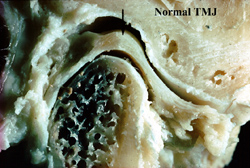
Normal Anatomy
The TMJ can cause problems if the disk gets displaced from it's normal position on top of the mandibular condyle.
TMJ Pathophysiology
The videos below are a very small portion of a longer videotape of the TMJ that Dr. Per-Lennart Westesson produced with Dr. Lars Eriksson in 1985 at the University of Lund, Sweden. These videos illustrate the normal and abnormal motion of the TMJ based on cadaver studies.
Normal Anatomy
Anterior Disk Displacement with Reduction
Symptoms and imaging: Clinical symptoms are often pain, clicking, locking, and limitation of opening. The best imaging technique to study the TMJ is MR imaging. MR demonstrates the bone and the soft tissue, and especially the disk can be seen. TMJ MR imaging is totally noninvasive and requires no injections.
Muscular pain versus joint pain: It is important to understand the difference of pain coming from the muscles of mastication or pain coming from the jaw joint (TMJ). Physical examination and imaging are helpful to make this differentiation.
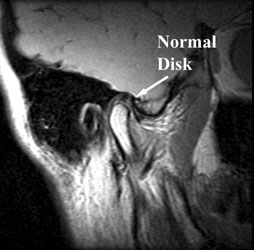
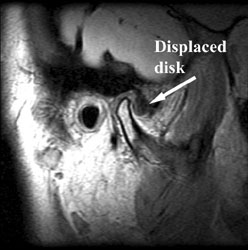
MR Imaging
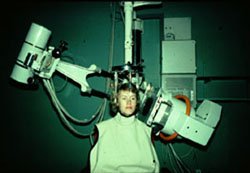
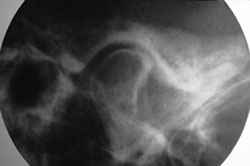
Plain Film
Plain films are used primarily to evaluate for bone disease such as osteoarthritis and traumatic injuries.
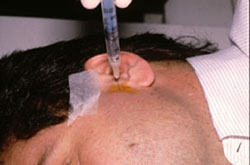
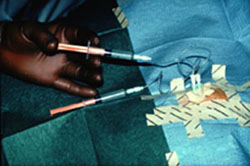
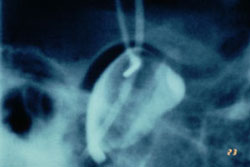
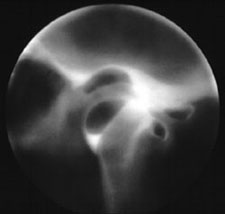
Arthrography
TMJ arthrography, once a mainstay in diagnosis of TMJ disease, is not used extensively anymore since noninvasive MR imaging has replaced it.
Treatment: Muscle symptoms are obviously not treated with surgery whereas occasionally joint disorders caused by derangement/internal derangement may be treated by surgery.
The etiology of TMJ pain and dysfunction is unknown. It is thought that in some cases it is caused by trauma, but many cases have no clear etiology.
The diagnosis is made by physical examination often assisted with imaging.
Remarks: Not all patients with pain in front of the ear or facial pain have TMJ disease. Many patients with true internal derangement also have muscle pain.
Physical therapy, rehabilitation, and muscle treatment are probably the most important conservative measures.